
USNS Mercy (T-AH-19) is the lead ship of her class of hospital ships in non-commissioned service with the United States Navy. Her sister ship is USNS Comfort (T-AH-20). She is the third US Navy ship to be named for the virtue mercy. In accordance with the Geneva Conventions, Mercy and her crew do not carry any offensive weapons, though defensive weapons are available.

USNS Comfort (T-AH-20) is a Mercy-class hospital ship of the United States Navy.

The Mercy class of hospital ships are converted San Clemente-class supertankers used by the United States Navy. Originally built in the 1970s by the National Steel and Shipbuilding Company, they were acquired by the Navy and converted into hospital ships, coming into service in 1986 and 1987.

The T2 tanker, or T2, was a class of oil tanker constructed and produced in large numbers in the United States during World War II. Only the T3 tankers were larger "navy oilers" of the period. Some 533 T2s were built between 1940 and the end of 1945. They were used to transport fuel oil, diesel fuel, gasoline and sometimes black oil-crude oil. Post war many T2s remained in use; like other hastily built World War II ships pressed into peacetime service, there were safety concerns. As was found during the war, the United States Coast Guard Marine Board of Investigation in 1952 stated that in cold weather the ships were prone to metal fatigue cracking, so were "belted" with steel straps. This occurred after two T2s, Pendleton and Fort Mercer, split in two off Cape Cod within hours of each other. Pendleton's sinking is memorialized in the 2016 film The Finest Hours. Engineering inquiries into the problem suggested the cause was poor welding techniques. It was found the steel was not well suited for the new wartime welding construction. The high sulfur content made the steel brittle and prone to metal fatigue at lower temperatures.

National Steel and Shipbuilding Company, commonly referred to as NASSCO, is an American shipbuilding company with four shipyards located in San Diego, Norfolk, Bremerton, and Mayport. It is a division of General Dynamics. NASSCO owns a subsidiary manufacturing facility with TIMSA in Mexicali, Mexico. The San Diego shipyard specializes in constructing commercial cargo ships and auxiliary vessels for the US Navy and Military Sealift Command; it is the only new-construction shipyard on the West Coast of the United States. NASSCO performs ship repairs and conversions for the United States Navy in all four shipyard locations: San Diego, Norfolk, Bremerton, and Mayport.
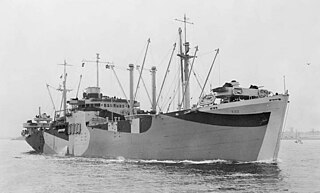
Type C1 was a designation for cargo ships built for the United States Maritime Commission before and during World War II. Total production was 493 ships built from 1940 to 1945. The first C1 types were the smallest of the three original Maritime Commission designs, meant for shorter routes where high speed and capacity were less important. Only a handful were delivered prior to Pearl Harbor. But many C1-A and C1-B ships were already in the works and were delivered during 1942. Many were converted to military purposes including troop transports during the war.
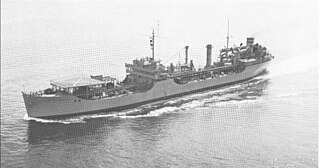
SS Mission Capistrano was a Type T2-SE-A2 tanker built for the United States Maritime Commission during World War II. After the war she was acquired by the United States Navy as USS Mission Capistrano (AO-112). Later the tanker transferred to the Military Sea Transportation Service as USNS Mission Capistrano (T-AO-112). She was a Mission Buenaventura-class oiler and was named for San Juan Capistrano in San Juan Capistrano, California.

USNS Redstone, designated T‑AGM‑20, was a tracking ship assigned to Apollo space mission support under the control of the Eastern Range. For a brief time during conversion the ship was named Johnstown with the designation AGM‑20.

SS Mission San Diego was a Type T2-SE-A2 tanker built for the United States Maritime Commission during World War II. After the war she was acquired by the United States Navy as USS Mission San Diego (AO-121). Later the tanker transferred to the Military Sea Transportation Service as USNS Mission San Diego (T-AO-121). She was a member of the Mission Buenaventura-class oiler and was named for the Mission San Diego de Alcalá.

USNS Robert E. Peary (T-AKE-5) is a Lewis and Clark-class dry cargo ship in the United States Navy. She is the fourth Navy ship named for Arctic explorer, Rear Admiral Robert E. Peary (1856–1920).
USNS Petrolite (T-AO-164) was a Suamico-class T2 tanker laid down on 12 October 1943 under Maritime Commission contract. The ship was built at Sun Shipbuilding and Drydock Co. in Chester, Pennsylvania. Launched on 13 January 1944; the ship was delivered to the United States Navy at Philadelphia Naval Shipyard on 31 January 1944.
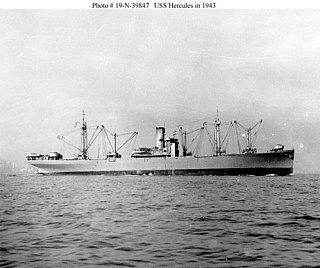
Type C3-class ships were the third type of cargo ship designed by the United States Maritime Commission (MARCOM) in the late 1930s. As it had done with the Type C1 ships and Type C2 ships, MARCOM circulated preliminary plans for comment. The design presented was not specific to any service or trade route, but was a general purpose ship that could be modified for specific uses. A total of 162 C3 ships were built from 1939 to 1946.

The Type C4-class ship were the largest cargo ships built by the United States Maritime Commission (MARCOM) during World War II. The design was originally developed for the American-Hawaiian Lines in 1941, but in late 1941 the plans were taken over by the MARCOM.
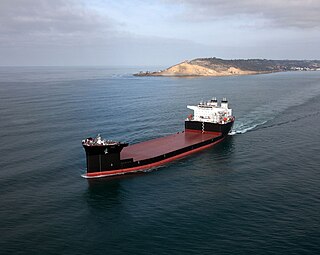
An Expeditionary Transfer Dock (ESD), formerly the Mobile Landing Platform (MLP), is designed to be a semi-submersible, flexible, modular platform providing the US Navy with the capability to perform large-scale logistics movements such as the transfer of vehicles and equipment from sea to shore. These ships significantly reduce the dependency on foreign ports and provide support in the absence of port availability. The class also houses a sub-class variant called the Expeditionary Mobile Base (ESB), formerly the Afloat Forward Staging Base (AFSB).

USNS John Lewis (T-AO-205) is a United States Navy replenishment oiler and the lead ship of her class. She is part of the Military Sealift Command fleet of support ships.
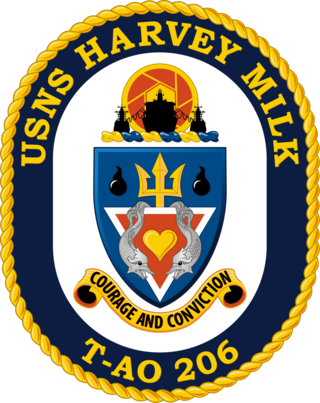
USNS Harvey Milk (T-AO-206) is the second of the John Lewis-class of underway replenishment oilers, operated by the Military Sealift Command (MSC) to support ships of the United States Navy.
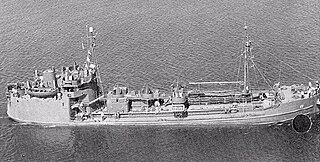
The T1 tanker or T1 are a class of sea worthy small tanker ships used to transport fuel oil before and during World War II, Korean War and Vietnam War. The T1 tanker classification is still in use today. T1 tankers are about 200 to 250 feet in length and are able to sustain a top speed of about 12 knots. The hull designation AO is used by the US Navy to denote the ship is a T1 oil tanker and AOG that the T1 is a gasoline tanker. The small size allows the T1 to enter just about any sea port or to anchor around a small island, this was very useful during the Pacific War. The T1 tanker can carry about 48,000 to 280,000 bbls. Some T1 tankers were used to transport goods other than oil, a few were used for black oil-crude oil, diesel, chemicals and rarely bulk cargo like grain. T1 tankers are also called liquid cargo carriers. The T1 tanker has about a 6,000 to 35,000 deadweight tonnage (DWT) of cargo. The small size also gives the ships short turn around time for repair, cleaning, loading and unloading. A T1 tanker carrying dirty cargo, like crude oil needs a few weeks of labor to clean before carrying clean cargo. Most T1 ships during World War II were named after major oil fields.



















